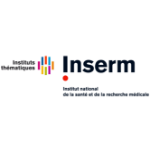Device to optimise wound closures
The challenge
Over 1 million operations are performed every day, each leaving a wound to be closed.[1] This is usually done with sutures or staples, and both have significant drawbacks.
Sutures are slow. It can take 10 minutes to close a hip or caesarean incision.[2] This has a financial cost of €57.12- €190.41 per minute for operating room time.[3] It also has a clinical cost as a longer anaesthetic time increases the risk of complications. In specific patient groups, extending an operation by 30 minutes increases the 30-day postoperative mortality by 25%.[4]
Instead, skin staples are often used to save time and reduce physician fatigue. However, peer-reviewed papers demonstrate that these deliver poorer cosmetic results and increase both pain and infection rate. For example, caesarean sections have a wound infection rate of 5% when closed with sutures and 10% when closed with staples.[5] There is a clinical need for a wound closure device as rapid as a skin stapler but with all the clinical advantages of sutures.
Hospital acquired infections are a common complication of surgery. While the wound is not the source of all these infections, it is identified as the root cause of between 40-60% of post-operative infections.[6]
With an ageing population, almost everyone will at some point require an operation and, therefore, incision closure. Over 320 million operations are performed each year.[7] Wound closure is a $9 billion market and growing by between 8-10% every year.[8] 90% of all surgical incisions (and traumatic lacerations) are closed with sutures or staples.[9]
The solution
The Starling QuickStitch team is developing the optimum wound closure device: a single use disposable device that comes preloaded with 34 tags (knotless sutures). The intuitive device design, which surgeons can use without instructions, was evolved by a surgeon, and informed by over 200 multispecialty clinician interviews.
Handled and manoeuvred like a skin stapler, the QuickStitch places a perfect suture instead of a metal staple. The suture is in the form of a self-retaining tag which places a consistent tension across the wound and an optimum level of wound eversion.
Preclinical tests indicate that it has the potential to deliver better cosmetic results than both sutures and staples. Easy to use and as fast as a skin stapler, it promises to save time and costs, and reduce physician fatigue.
The solution generates improved cosmetic results over both sutures and staples for three reasons. Firstly, it ensures the ideal tension within the wound. Secondly, it induces the optimum wound inversion because of the carefully calibrated force distribution within the tag. Thirdly, it reliably inserts tags with the same tension and eversion every time. This creates a consistency throughout the wound which allows optimisation of blood flow and superior healing.
Doctors are no longer forced to choose between fast inferior closure or slow superior closure. The QuickStitch will enable surgeons to close wounds at stapler speed but with results superior to sutures.
Expected impact
Infections following joint replacements can be devastating and extremely expensive. The QuickStitch will help minimise the incidence of this. The QuickStitch will not eliminate all hospital acquired infections. But initial research suggests it could significantly reduce them compared with the use of staples.
The impact of speeding up wound closure will have three major effects on operating practices. Firstly, it may allow an extra procedure on an operative list reducing hospital wait lists. Secondly, it will generate time and therefore cost savings. Thirdly, it will reduce 30-day postoperative mortality.
This project promises to improve care pathways around wound closure, save money, reduce the risk of complications, and improve patient outcomes. Ultimately, it will help ensure that patients with wounds have a better experience and improved quality of life as they recover from their procedure.
External Partners
- Sterling Surgical
References
[1] Dobson, G. (2020). Trauma of major surgery: A global problem that is not going away. Int J Surg; 81: 47–54.
[2] Macario (2010). What does one minute of operating room time cost? Journal of Clinical Anesthesia 22:233-236.
[3] Cheng, et. al. (2018). Prolonged operative duration is associated with complications: a systematic review and meta-analysis. J Surg Res. 229:134-144.
[4] Cheng, et. al. (2018).
[5] Zuarez-Easton, et. al. (2017). Postcesarean wound infection: prevalence, impact, prevention, and management challenges, International Journal of Womens Health. 9: 81–88.
[6] Zuarez-Easton, et. al. (2017).
[7] Dobson, G. (2020). Trauma of major surgery: A global problem that is not going away. Int J Surg; 81: 47–54.
[8] Dobson, G. (2020).
[9] Zuarez-Easton, et. al. (2017).
Members

CLC/InnoStars: France
Partner classification: Research, Tech Transfer, Clusters, Other NGOs
Founded in 1964, the French National Institute of Health and Medical Research (Inserm) is a public scientific and technological institute which operates under the joint authority of the French Ministry of Health and French Ministry of Research. As the only French public research institute to focus entirely on human health, in 2008 Inserm took on the responsibility for the strategic, scientific and operational coordination of biomedical research. This key role as coordinator comes naturally to Inserm thanks to the scientific quality of its teams and its ability to conduct translational research, from the laboratory to the patient’s bed. Inserm plays a leading role in creating the European Research Area and boosts its standing abroad through close partnerships (teams and partner laboratories abroad). Inserm is active in many areas, such as Technologies for Health, Public Health (Cohorts, Healthcare systems), Infectious and chronic disease, Neurosciences, Cancer, and Genomics.
INSERM - French National Institute of Health and Medical Research
INSERM - French National Institute of Health and Medical Research, 101 Rue de Tolbiac, 75013 Paris, France
Key Activities in Corporate Innovation
Pharma, Med Tech, ICT, Diagnostics, Imaging, Nutrition
Key Activities in Social Innovation
Healthcare provision
Key Activities in Business Creation
Incubation, Technology Transfer
Key Activities in Education
Medical faculties, Healthcare professional education/training


CLC/InnoStars: UK-Ireland
Partner classification: Education, Research
Trinity College Dublin is Ireland's leading University and has a number of activities relevant for EIT Health: School of Nursing & Midwifery, with a focus on Ageing & Intellectual Disability, Mental Health, Population & Community Health and Improving Health & Wellbeing of Women, Children & Families; Trinity Centre for Practice & Healthcare Innovation; Bioengineering & Advanced Materials: Trinity College Institute for Neuroscience & Global Brain Health Institute; TILDA - Irish longitudinal ageing study; School of Computer Sciences & Statistics with expertise in AI, digital content technology, augmented reality and statistics & data science; Learnovate: Innovation in EdTech and learning technology; ADAPT: Digital content and media innovation; Tangent, Trinity's Ideas Workspace: innovation and entrepreneurship education and start-up support; Trinity Business School Centre for Social Innovation; Science Gallery.
Trinity College Dublin
Trinity College Dublin, College Green, Dublin, Ireland
Key Activities in Research and Developement
Other research, Biomedical engineering, Life Sciences, Clinical research
Key Activities in Corporate Innovation
Med Tech, ICT
Key Activities in Social Innovation
Healthcare provision
Key Activities in Business Creation
incubation, Technology Transfer, Business coaching
Key Activities in Education
Business Schools, Entrepreneurship training, Technical faculties, Medical faculties, Healthcare professional education/training
